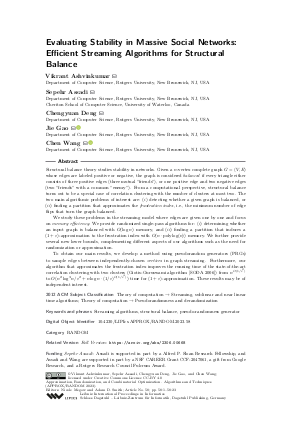LIPIcs.APPROX-RANDOM.2023.58.pdf
- Filesize: 1.15 MB
- 23 pages

 Creative Commons Attribution 4.0 International license
Creative Commons Attribution 4.0 International license









































Feedback for Dagstuhl Publishing